Sharpening the edges of the snowboard

The edge on a snowboard is just as important as the tip of a scalpel or wood cutter. The life of an athlete sometimes depends on the correctness and accuracy of its sharpening. An unevenly sharpened edging will lead to the fact that the athlete is simply thrown off the track, despite the fact that he clearly performs technical tricks.
Required tools
The best tool for sharpening edges is a canto cutter. It features parallel and precisely aligned abrasive coated rails. They ensure the perfection of the groove of the steel from which the edging itself is made. A canto cutter is a special sharpener, without which it will not be possible to fully grind the sharp edges of the edge. In service centers that repair skis and snowboards, this service is provided using mechanical electric grinders that work like a cantore cutter.
But even a manual canto cutter necessarily has a sharpening angle adjustment. It is also possible to use files, but this will require either time-consuming, or a clear and well-developed skill of sharpening, or even better, both, since the work of leveling the edge sharpness is very filigree.
A rough approach like sharpening a kitchen knife or ax does not work here.
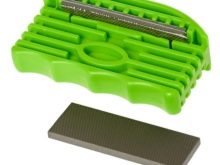
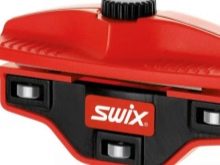
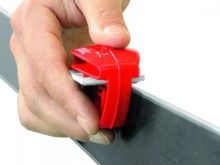
Angle selection
On a new and just purchased snowboard, you do not need to sharpen the edging. This work has already been done by the manufacturer: the edging of the snowboard is pre-cast and baked according to technologies that allow them not to deteriorate for a long time when passing hundreds of kilometers of descents. But if the descents are everyday, then after 1-2 months the edge of the snowboard becomes dull and serrated from small stones found under the snow.

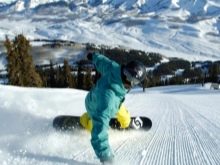
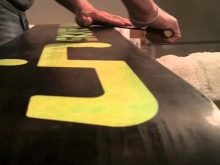
Flying along them at high speed, the edging gets shallow longitudinal and transverse, as well as oblique furrows, impairing dynamics and controllability.To determine which edge edge sharpening angle to choose, we will name certain types of sharpening.
- Factory. The edges are tested at the factory and lightly ground if necessary. The factory-released model of the snowboard is ready to use.
- Sports. One or two degrees are removed, which allows the athlete to turn around and perform other tricks.
- Backward. Suitable for parkour enthusiasts who like to ride the railing on a mini snowboard.
- Special. The ribs are displaced, while the angle is sharpened, and the base, in turn, is not affected in any way. The sharp angle obtained in this way will make it easier to stay on your feet after the turns in the process of further descent.

The angle is selected mainly from two ranges of values.
- 85-87 degrees. Extreme snowboarders use it. Slalom is their element, but the technique must be clearly worked out so that the rider does not fly off the board during turns and sharp turns. An 88 degree angle will require less experience.
- 89-90. Suitable for beginners who just started snowboarding for the first time yesterday. It is used on gentle and level tracks, at a rather low descent speed. Children and adolescents start with snowboards whose edging is sharpened at this angle.
After sharpening the edging, clean the snowboard of any dirt. Another equally important component is a smooth and slippery surface, regularly lubricated with special compounds.
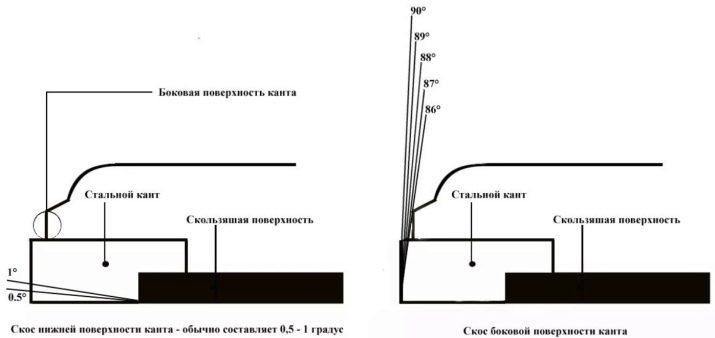
How to sharpen correctly?
To sharpen the edging on your snowboard, prepare your equipment properly.
- Secure the board in the most secure way. You will need a vise or a special machine.
- Wipe the dirty surface with a lint-free cloth. In this case, any solvent is used that removes traces of the previous layer of grease.
- Eliminate scuffs and scratches on sliding surfaces using hot melt glue or special candles.
- Wait for the surface to cool down and remove the edges of the plastic that protrude from the sliding edge. It should be perfectly flat and smooth: the slightest roughness and abrasion slow down the snowboard, depriving it of its ease of control.
- Grind the edging with a file.
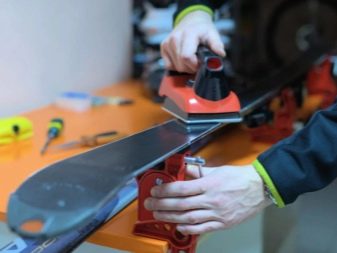

Now the board is being prepared for sharpening and, in fact, is being sharpened. Please do the following.
- Cover the sliding edge with paraffin: this will prevent the steel shavings from settling on it, which would break the smoothness of the projectile again.
- Adjust the angle you want on the canto cutter.
- Using a construction marker, draw a line on the edge of the snowboard: this will allow the cant cutter not to go further to the side than intended.
- Start grinding. If the line is completely cleaned off, then the edging is sharpened to the desired width. Pressing should be unsharp, even, starting from the front and ending at the tail. Use a plastic brush to clean out the chips from edge sharpening.
- Additionally, finish the edging with a block. This is the final finishing of the main guide of the snowboard.
Check if your snowboard is working properly: make sure you do not exceed the degrees cut off by the canto cutter. Ideal if you live in the mountains or on a hill, and there is an opportunity to ride along a familiar track to check how much better the projectile is handling.
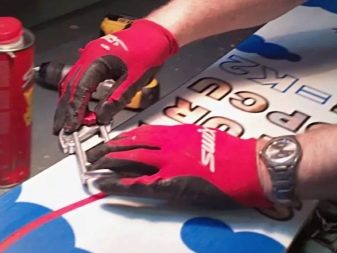
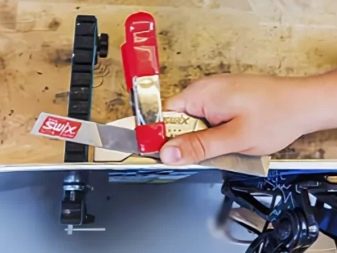
Helpful hints
The rules, without which a snowboard cannot be sharpened professionally, are the same for all athletes. If you are one of those who do not need to contact other craftsmen, like to do everything at home and with your own hands, then follow these recommendations.
- The side edges are sharpened only when the lower ones have been carefully processed.
- The main sharpening is not performed before preliminary grinding, otherwise all abrasions and irregularities will not be completely eliminated.
- You cannot sharpen the edges the other way around (from the rear end to the front), otherwise the cut will be even more blunt, and the snowboard on the descent will stop accelerating to the desired speed.
- The canto cutter should not be set otherwise than with the edge of the blade towards the bevel.
- The edge should not only be perfectly sharpened. It is ground in the transverse plane, along which the angle is set, and also in the longitudinal plane. Transverse irregularities are fraught with drifts, flying off the track, burrowing into the snow, which is why the athlete will not get off with only a slight fright.
If you are not sure that you will sharpen the edges correctly and ideally, then it is better not to take on this work, but entrust it to a specialist.


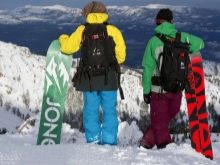
For edge sharpening, see below.








